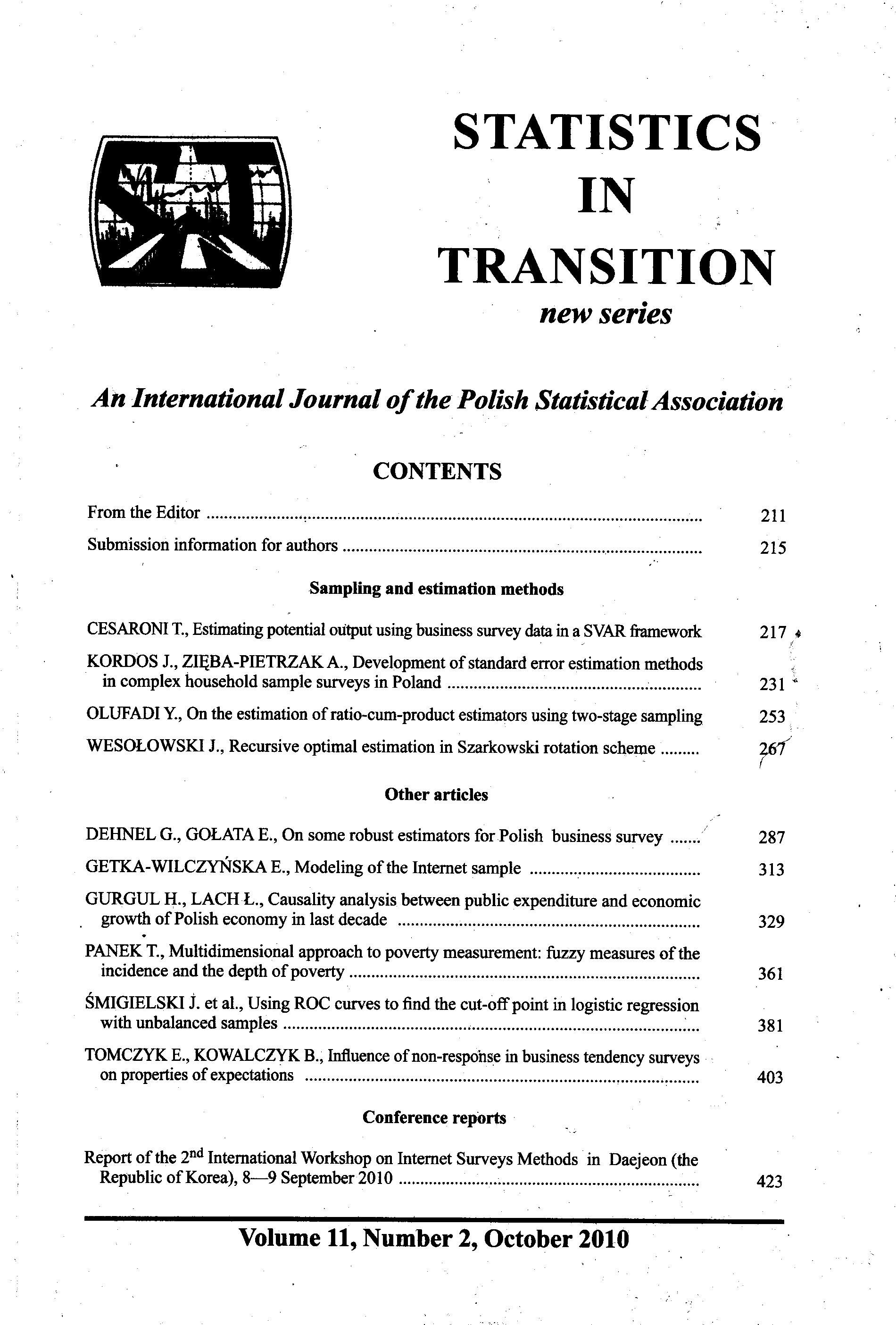ARTICLE
ABSTRACT
In the paper we present the following ideas for the Internet mediated research – respondents’ arrival process as a stream of events and a pure birth process and cut models of it for exponential distribution to interpret and analyse some stochastic properties of the Internet data collection process.
KEYWORDS
Internet sample, population, Markov process, pure birth process, model.
REFERENCES
BARLOW, R.E, PROSCHAN F. (1975). Statistical theory of reliability and life testing. Holt, Rinehart and Winston Inc., New York 1975.
CALLEGARRO M., DISOGRA CH. (2008). Computing response metrics for online panels. Public Opinion Quarterly, 72, 5, Special Issue, 1008–1032.
COUPER M.P., MILLER P.V. (2008). Web survey methods. Public Opinion Quarterly, 72, 5, Special Issue, 831–835.
FELLER W. (1977, 1978). An introduction to probability theory and its applications (in Polish). Vol. I, II, Polish Scientific Publisher, Warsaw.
GALESIC M. (2006). Dropout on the Web: effects of interest and burden experiences during an online survey. Journal of Official Statistics, 22, 313–328.
GETKA-WILCZYŃSKA E. (2009). Mathematical modeling of the Internet survey. Engineering the Computer Science and IT ed. by Safeeullah Soomro, In-Teh, Croatia.
http://www.sciyo.com/articles/show/title/mathematical-modeling-of-the-internetsurvey.
GNEDENKO B. W., BIELAJEV A., SOLOWIEV A.D. (1968). Mathematical methods in reliability theory (in Polish). Technical –Scientific Publisher, Warsaw.
KINGMAN J. F.C. (1993). Poisson processes. Clarendon Press Oxford.
LEE S. (2006). Propensity score adjustment as a weighting scheme for volunteer panel Web Surveys. Journal of Official Statistics, 22, 2, 329–349.
LEE S., VALIANT R. (2009). Estimation for volunteer panel Web surveys using propensity score adjustment and calibration adjustment. Sociological Methods and Research. Vol.37, No 3, February, 319–343.
RESNICK S.I. (1998). Adventure in stochastic processes. Birkhäuser Boston.
ROSENBAUM P.R., RUBIN D. (1983). The Central Role of the Propensity Score in Observational Studies for Causal Effects. Biometricka, 70, 41–55.
SÄRNDAL C.E., SWENSSON B., WRETMAN J. (1992). Model assisted Survey Sampling. Springer-Verlag New York Inc., New York.
SCHONLAU M., van SOEST A., KAPTEYN A., COUPER M. (2009). Selection bias in Web surveys and the use of propensity scores. Sociological methods and research, Vol. 37, No. 3, 291–318.
TILLE, Y. (2006). Sampling algorithms. Springer Science-Business Media, Inc., New York.
VEHOVAR, V. (2007). Workshop on Internet Survey Methodology. Ullehammer, September 2007.
http://vv.ris.org, www.WebSM.org
http://www.aapor.org
